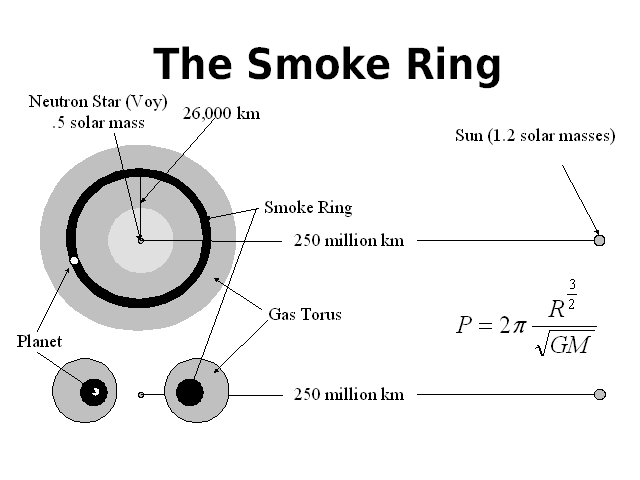
NOTES
Here’s another big object: The Smoke Ring. It is a torus of gas circling an old neutron star, created from the atmosphere of the planet within the Ring. Its radius is about 26,000 kilometers and it gets light from the star that both it and the neutron star circle. It holds life. By the way, there is a gas torus around Saturn which one of Saturn’s satellites (Titan) orbits within (see Niven’s N-Space for details on how he was inspired to create the Smoke Ring).
Being so close to the high gravity of the neutron star, things in the Smoke Ring orbit the star pretty quickly. Niven gives a minimum period of 2 hours for an object in the Ring, while I calculated a typical period of a little less than 2 minutes. I suspect that this is rare error on the author’s part – to get a period of 2 hours with the given radius of the Ring, the mass of Voy would have to be about a 10,000th of the mass of the Sun, which is pretty unlikely. The mass of Voy is implied to be 0.5 solar masses which is about 1033 grams.
The first time I gave this talk a student asked how a planet could have survived the supernova that created Voy - it’s in the book that the planet came later and also that Voy is old enough that it is not rotating anymore and therefore not sweeping a radiation beam through the Smoke Ring periodically. Good question, though.
